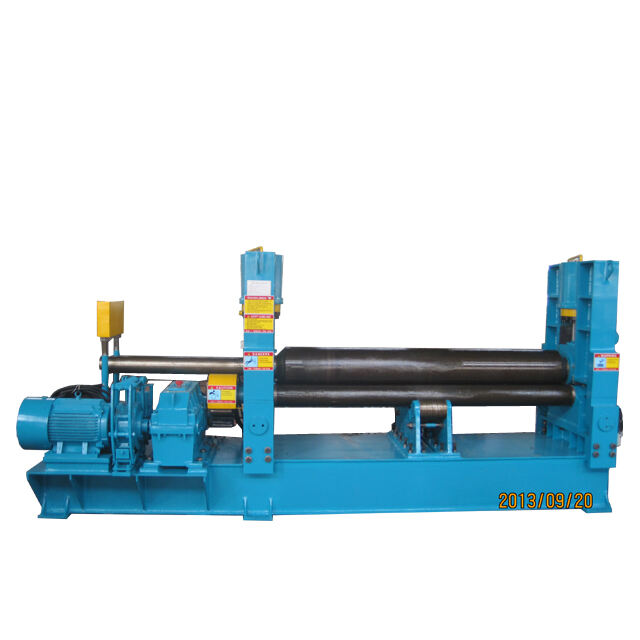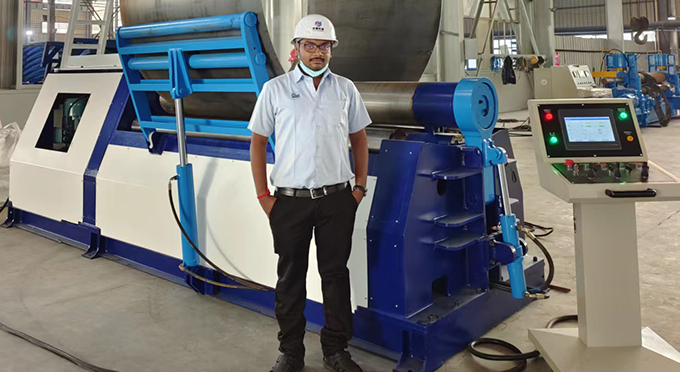Understanding Operational Stress and Failure Mechanisms in Plate Bending Rolls
How Plate Bending Rolls Degrade Over Time
The plate bending rolls tend to break down over time because of constant rubbing, repeated stress loads, and just plain old metal getting tired. According to recent studies, about seven out of ten early failures actually start with tiny cracks forming in places where the pressure is highest like those roller bearings and hydraulic cylinders (Wang et al. looked into this back in 2024). Dust and dirt really mess things up too. When there are all sorts of gritty particles floating around, they wear away at the rollers much faster than normal. Some tests showed surfaces wearing down almost half as fast again in these dusty conditions compared to cleaner environments.
The Impact of Mechanical and Hydraulic Load on Longevity
Exceeding design limits leads to irreversible damage:
- Mechanical overload: Forces beyond 150% of rated capacity distort roller frames in 94% of cases (Ponemon 2023)
- Hydraulic stress: Pressure spikes exceeding 3,500 PSI compromise seal integrity, contributing to 60% of hydraulic system failures
Case Study: Misalignment-Induced Failure in a Three-Roll Bending Machine
A manufacturing facility disregarded a 0.3 mm roller misalignment identified during routine checks. Within eight months, uneven load distribution resulted in:
- 14% variation in plate thickness
- Complete bearing seizure requiring $28k in repairs
- 120 hours of unplanned downtime
Rising Downtime Costs Due to Poor Maintenance Practices
Unplanned outages now cost manufacturers an average of $26k/hourâ35% higher than in 2020 (Ponemon 2023). The primary cost drivers are:
- Emergency part sourcing (42%)
- Idled labor (33%)
- Production delays (25%)
Proactive Monitoring Strategies to Reduce Wear Accumulation
Top manufacturers reduce repair costs by 57% using predictive technologies:
- Vibration sensors to detect early bearing wear
- Infrared thermography for identifying hydraulic hot spots
- Oil analysis capable of forecasting pump failures over 200 hours in advance
These methods extend service life by 19 months compared to reactive maintenance, according to a 2024 study on fatigue loading.
Daily and Preventive Maintenance Routines for Plate Bending Rolls
Daily Cleaning and Debris Removal to Prevent Contamination
Removing metal shavings, dust, and residual lubricants daily from the rollers and guide pins prevents abrasive contamination. Operators should use non-metallic brushes or vacuums for effective cleaning of contact surfaces and couplings. Audits show daily cleanup minimizes roller scuffing and extends lifespan by up to 22 months.
Visual Inspections for Fastener Security
Loose fasteners cause 29% of unplanned machine downtime incidents. Regular inspections for correctly torqued bolster bolts (usually 85 Nm for large plate rolls) and end flanges detect potential slippage. Implement lock nuts and wire passes for extra assurance where possible.
Lubrication and Hydraulic System Care for Optimal Performance
Using Manufacturer-Recommended Lubricants to Prevent Metal Wear
To ensure roller longevity, always use greases that have passed OEM tests at operating pressures (> 2500 PSI). Manufacturer-specified products maintain integrity even under impacts exceeding 50g in a plate bending roll setting. Industry research noted that unsuitable lubrication causes 47% degradation in sealed bearing durability after 18 months.
Preventing Over-Pressurization Through Regular Valve Adjustments
Routine adjustment checks for relief valves help in maintaining operating conditions within OEM standards. Data from the 2023 Fluid Systems Performance Survey suggests 79% of leaks originate from inadequately seated relief valves.
FAQ Section
Why do plate bending rolls degrade over time?
The primary reasons are constant rubbing, repeated stress loads, and wear from metal fatigue. Dust and dirt can also increase wear. Tiny cracks form where pressure is highest such as in roller bearings and hydraulic cylinders, leading to a higher likelihood of failure over time.
What causes mechanical overload in plate bending rolls?
Mechanical overload occurs when forces exceed 150% of the rated capacity. It leads to distortion in roller frames and significant damage over time.
How can companies reduce unplanned downtime costs?
By implementing predictive maintenance technologies such as vibration sensors, infrared thermography, and oil analysis, manufacturers can significantly reduce repair costs and extend the service life of machines.
Why is daily maintenance important for the performance of plate bending rolls?
Daily cleaning of metal shavings, dust, and residual lubricants can prevent abrasive contamination and reduce annual bearing wear, extending the equipment’s lifespan.
Table of Contents
- Understanding Operational Stress and Failure Mechanisms in Plate Bending Rolls
- Daily and Preventive Maintenance Routines for Plate Bending Rolls
- Daily Cleaning and Debris Removal to Prevent Contamination
- Visual Inspections for Fastener Security
- Lubrication and Hydraulic System Care for Optimal Performance
- FAQ Section




